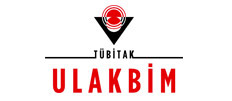Open Access
Peer Reviewed
ORIGINAL RESEARCH
245 Viewed119 Downloaded
A Methodological Study on Fetal Health Classification Using Optimized LightGBM with SMOTE and Optuna-Based Hyperparameter Optimization
Received: 08 Mar 2025 | Received in revised form: 08 May 2025
Accepted: 16 Jun 2025 | Available online: 18 Jul 2025
JCOG.
DOI: 10.5336/jcog.2025-110259
Article Language: EN
Article Language: EN
Copyright Ⓒ 2025 by Türkiye Klinikleri. This is an open access article under the CC BY-NC-ND license (http://creativecommons.org/licenses/by-nc-nd/4.0/)
ABSTRACT
Objective: Fetal health classification is of great clinical importance as it allows the early detection and management of fetal health problems during pregnancy.This study aims to enhance fetal health classification by integrating Light Gradient Boosting Machine (LightGBM), synthetic minority oversampling technique (SMOTE), and Optuna-based hyperparameter tuning. The goal is to improve classification accuracy, address class imbalance, and optimize model performance in predicting normal, suspicious, and pathological fetal health conditions. Material and Methods: The study utilized the University of California, Irvine ''Cardiotocography Data Set'' which contains 2.126 fetal cardiotocography (CTG) records classified into 3 categories. To handle class imbalance, SMOTE is applied. Various machine learning models (Stochastic Gradient Descent Classifier, Gradient Boosting, Decision Tree, Support Vector Machine, K-Nearest Neighbors, and LG) were compared, with LightGBM selected due to its efficiency in structured medical data processing. Optuna is used for hyperparameter tuning. The dataset was split into 80% training and 20% testing, and model performance was assessed using accuracy, precision, recall, and F1- score. Results: The optimized LightGBM+SMOTE+Optuna model achieved 99% accuracy, significantly outperforming the other classifiers. The recall and F1-score for the suspicious and pathological classes improved, reducing the misclassification rates. The confusion matrix confirmed a substantial decrease in errors, demonstrating the model's robustness and reliability. Conclusion: The proposed model successfully enhances fetal health classification accuracy by addressing class imbalance and optimizing hyperparameters. The integration of LightGBM, SMOTE, and Optuna improves model generalization, making it a valuable tool for fetal health assessment. Future studies could explore deep learning approaches to further refine classification performance and support clinical decision-making.
Objective: Fetal health classification is of great clinical importance as it allows the early detection and management of fetal health problems during pregnancy.This study aims to enhance fetal health classification by integrating Light Gradient Boosting Machine (LightGBM), synthetic minority oversampling technique (SMOTE), and Optuna-based hyperparameter tuning. The goal is to improve classification accuracy, address class imbalance, and optimize model performance in predicting normal, suspicious, and pathological fetal health conditions. Material and Methods: The study utilized the University of California, Irvine ''Cardiotocography Data Set'' which contains 2.126 fetal cardiotocography (CTG) records classified into 3 categories. To handle class imbalance, SMOTE is applied. Various machine learning models (Stochastic Gradient Descent Classifier, Gradient Boosting, Decision Tree, Support Vector Machine, K-Nearest Neighbors, and LG) were compared, with LightGBM selected due to its efficiency in structured medical data processing. Optuna is used for hyperparameter tuning. The dataset was split into 80% training and 20% testing, and model performance was assessed using accuracy, precision, recall, and F1- score. Results: The optimized LightGBM+SMOTE+Optuna model achieved 99% accuracy, significantly outperforming the other classifiers. The recall and F1-score for the suspicious and pathological classes improved, reducing the misclassification rates. The confusion matrix confirmed a substantial decrease in errors, demonstrating the model's robustness and reliability. Conclusion: The proposed model successfully enhances fetal health classification accuracy by addressing class imbalance and optimizing hyperparameters. The integration of LightGBM, SMOTE, and Optuna improves model generalization, making it a valuable tool for fetal health assessment. Future studies could explore deep learning approaches to further refine classification performance and support clinical decision-making.
MENU
POPULAR ARTICLES
MOST DOWNLOADED ARTICLES





This journal is licensed under a Creative Commons Attribution-NonCommercial-NoDerivatives 4.0 International License.









